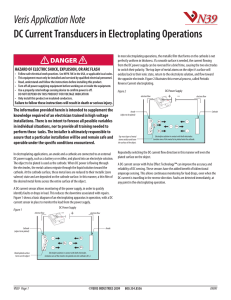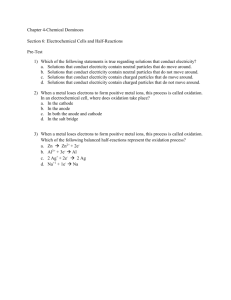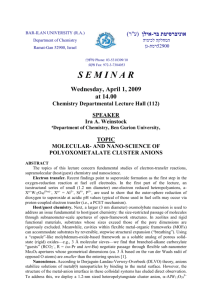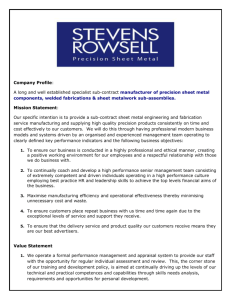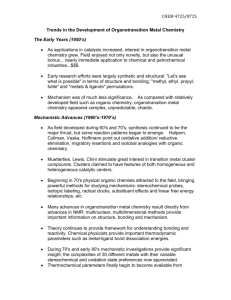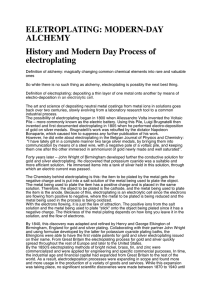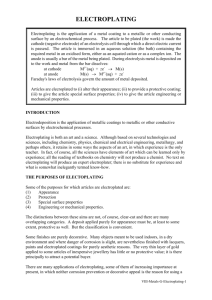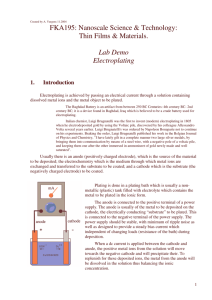Background
advertisement
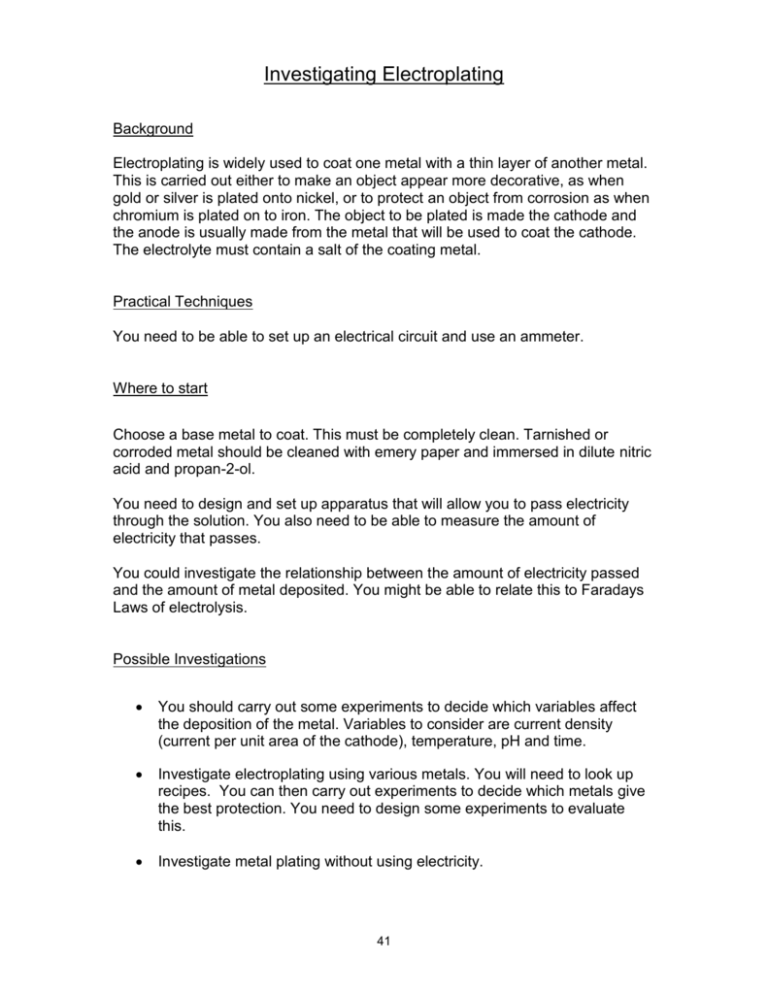
Investigating Electroplating Background Electroplating is widely used to coat one metal with a thin layer of another metal. This is carried out either to make an object appear more decorative, as when gold or silver is plated onto nickel, or to protect an object from corrosion as when chromium is plated on to iron. The object to be plated is made the cathode and the anode is usually made from the metal that will be used to coat the cathode. The electrolyte must contain a salt of the coating metal. Practical Techniques You need to be able to set up an electrical circuit and use an ammeter. Where to start Choose a base metal to coat. This must be completely clean. Tarnished or corroded metal should be cleaned with emery paper and immersed in dilute nitric acid and propan-2-ol. You need to design and set up apparatus that will allow you to pass electricity through the solution. You also need to be able to measure the amount of electricity that passes. You could investigate the relationship between the amount of electricity passed and the amount of metal deposited. You might be able to relate this to Faradays Laws of electrolysis. Possible Investigations You should carry out some experiments to decide which variables affect the deposition of the metal. Variables to consider are current density (current per unit area of the cathode), temperature, pH and time. Investigate electroplating using various metals. You will need to look up recipes. You can then carry out experiments to decide which metals give the best protection. You need to design some experiments to evaluate this. Investigate metal plating without using electricity. 41 Sources of Information Farley R., (2001), School Chemistry Experiments, Association for Science Education. Robertson K.J.A., Gray C., Wood, C.A. (2001) Starter Investigations for Advanced Higher Chemistry, Royal Society of Chemistry Thorpe A., Assessing the risks in practical work, Chemistry Review, September 2000 Thorpe A., Experimental error and error analysis: just how good are those results, Chemistry Review, November 2001 42 Teachers' Notes General The practical techniques are not particularly demanding and therefore teachers may not consider this investigation suitable for all students. It is also an experiment that is often carried out at GCSE level and therefore teachers must make students aware that they need to approach this investigation at the appropriate level. The Royal Society of Chemistry Starter Investigations has an excellent range of suggestions and ideas. The following recipe is suggested for copper plating 100g copper (II) sulphate 50 cm3 of 2 mol dm-3 sulphuric acid 3g copper (II) chloride 500 cm3 water It can take quite a long time to get the experiments set up and running well but once this has been completed results should be obtained fairly regularly. Chemical Principles Electrochemistry, quantitative chemistry, Essential Equipment Ammeters, voltmeters etc Essential Chemicals Base metals to plate, metal salt solutions (varies according to students choice) Safety No risk assessment has been given. It is essential that students prepare a detailed risk assessment before they start. Teachers must be satisfied that this is suitable for the proposed investigation. 43


